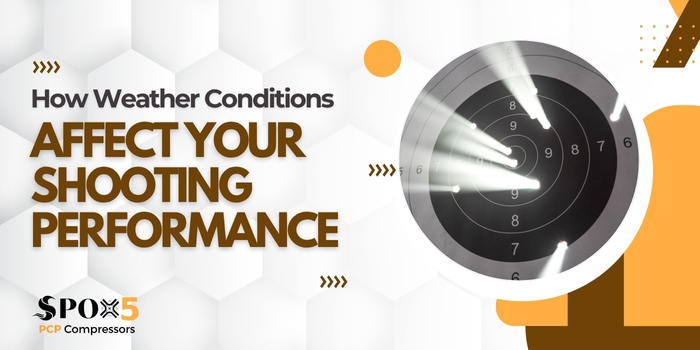Weather matters. Wind, temperature, humidity, precipitation and light all influence how a pellet or bullet flies — and how you as a shooter perform. Learning to read and adapt to conditions is a major step toward consistent accuracy, whether you’re at the range, hunting, or competing. Below are the key weather elements that affect shooting performance and practical ways to compensate.
Wind: the biggest variable
Wind is the most obvious and often the most challenging factor. Even a light crosswind will push a projectile off its intended path; gusty or shifting winds make holdoff and callouts far harder. Wind affects different pellets and calibers in different ways — heavier projectiles resist wind better, while lighter ones are more easily pushed.
How to deal with wind:
-
Watch the environment: flags, grass, smoke, dust and treetops tell you wind direction and stability.
-
Read Mirage: heat shimmer shows wind angle and strength at different distances.
-
Use wind holds: practice aiming off the target based on feel and prior data rather than trying to “follow” a moving target.
-
Shoot in strings: when the wind is calm, fire multiple shots to take advantage of stable windows.
Temperature and air density
Temperature changes air density: cold, dense air increases drag and reduces velocity compared to warm air, shortening point of impact at longer ranges. For PCP shooters, temperature also affects fill pressure and valve behavior; cold weather can reduce usable shots per fill and change shot-to-shot consistency.
Practical tips:
-
Chronograph in the environment you’ll shoot in whenever possible.
-
If shooting in cold, keep spare seals and lubricants rated for low temperatures; warm your air cylinders before use if safe and practical.
-
Expect a different zero between summer and winter; re-zero for long-range shots when temperatures change significantly.
Humidity and barometric pressure
Contrary to common belief, humidity has a small effect on ballistics — moist air is slightly less dense than dry air — but in practical terms it’s usually minor compared with wind and temperature. Barometric pressure (altitude and weather systems) does change air density: higher altitude = less air resistance, flatter trajectory.
Tip: note elevation and pressure if you frequently shoot across different ranges — small corrections add up at long distances.
Precipitation, fog and light conditions
Rain, sleet or fog reduces visibility and can affect optics (droplets on lenses), as well as add drag to projectiles. Low light changes sight picture and depth perception, while glare can hide subtle target details.
What to do:
-
Use lens covers and anti-fog solutions for optics.
-
Wear appropriate eye protection with good contrast in low light.
-
Postpone precision work in heavy precipitation; focus on fundamentals or close-range practice instead.
Shooter comfort and human factors
Weather affects you as much as your gear. Cold hands lose dexterity, heat causes fatigue and dehydration, and rain or wind increases distraction. Stay comfortable: layer clothing, hydrate, protect extremities, and use gloves that still allow trigger control.
Final checklist for shooting in variable weather
-
Check wind at multiple distances and practice wind holds.
-
Chronograph and zero in the actual conditions if possible.
-
Use weather-appropriate lubricants/seals for PCP setups.
-
Protect optics and electronics from moisture and fog.
-
Prioritize comfort and safety—dress and plan accordingly.
Weather is part of the sport. Embracing it, practicing under varied conditions, and keeping gear and yourself prepared will make you a more adaptable and accurate shooter.
Gear & Air Supply in All Conditions: Don’t forget that your air supply is part of the weather equation. A reliable compressor and proper tank care make a big difference when temperatures or humidity shift. At SPOX5, we recommend keeping your fill equipment protected from the elements and using a dependable unit like the C3 PCP compressor to ensure consistent, on-demand pressure regardless of conditions. Warming tanks safely before use in cold weather, storing compressors in dry, temperature-stable places, and checking seals more frequently in extreme climates will help maintain shot-to-shot consistency and prolong the life of your gear.
compressor and proper tank care make a big difference when temperatures or humidity shift. At SPOX5, we recommend keeping your fill equipment protected from the elements and using a dependable unit like the C3 PCP compressor to ensure consistent, on-demand pressure regardless of conditions. Warming tanks safely before use in cold weather, storing compressors in dry, temperature-stable places, and checking seals more frequently in extreme climates will help maintain shot-to-shot consistency and prolong the life of your gear.

